UPSC Daily Current Affairs: 13th July 2025 | Current Affairs & Hindu Analysis: Daily, Weekly & Monthly PDF Download
GS2/International Relations
BRICS Grouping
Source: The Hindu
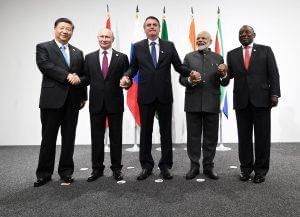 Why in News?
Why in News?
The recent threat by the U.S. President to impose 10% tariffs on members of the BRICS grouping, following their summit in Rio de Janeiro, highlights ongoing tensions in international trade relations.
Key Takeaways
- BRICS is an acronym for Brazil, Russia, India, China, and South Africa, originally formed as BRIC in 2001.
- South Africa joined the group in 2010, expanding BRIC to BRICS.
- The objectives include enhancing cooperation among members and increasing the influence of the Global South in global governance.
- New members include Egypt, Ethiopia, Iran, the United Arab Emirates, and Indonesia.
- The combined population of BRICS nations is approximately 3.5 billion, accounting for 45% of the global population.
- BRICS economies represent over $28.5 trillion, approximately 28% of the world's economy.
Additional Details
- New Development Bank (NDB): Established by BRICS to mobilize resources for infrastructure and sustainable development projects in emerging markets and developing countries (EMDCs). It started operations in 2015 and has its headquarters in Shanghai, China.
- The NDB allows membership to any United Nations member, where voting power is proportional to subscribed shares, ensuring BRICS nations maintain at least 55% voting power without any country holding veto power.
The BRICS grouping continues to evolve, aiming to bolster economic collaboration and promote sustainable development while enhancing its role in global governance.
GS3/Defence & Security
Operation Shiva Launched for Amarnath Yatra Security
Source: New Indian Express
Why in News?
The Indian Army has recently initiated Operation Shiva to enhance security measures for the ongoing Amarnath Yatra, an annual Hindu pilgrimage to the sacred Amarnath Cave in Jammu & Kashmir.
Key Takeaways
- Operation Shiva aims to ensure the safe and smooth conduct of the Amarnath Yatra.
- Over 8,500 troops have been deployed for robust security along the Yatra routes.
- The operation involves advanced technological resources and close coordination with civil authorities.
Additional Details
- Amarnath Yatra: This annual pilgrimage takes place to the Amarnath Cave, known for its naturally formed ice Shivling, which symbolizes Lord Shiva.
- Security Measures: The operation includes a dynamic counter-terrorism grid, prophylactic security deployment, and corridor protection measures.
- Technological Support: A Counter-Unmanned Aerial System (C-UAS) grid has been established with over 50 systems to neutralize drone threats.
- Medical Assistance: More than 150 doctors and medical personnel have been deployed, along with advanced medical facilities to support the Yatra.
- Live Monitoring: Unmanned Aerial Vehicles (UAVs) are utilized for real-time monitoring of Yatra routes and the Holy Cave.
Operation Shiva represents a significant effort by the Indian Army to provide comprehensive security and support for the pilgrims during a time of heightened threats, ensuring that the sacred Yatra can proceed safely.
GS3/Economy
Debate on Inequality in India
Source: Indian Express
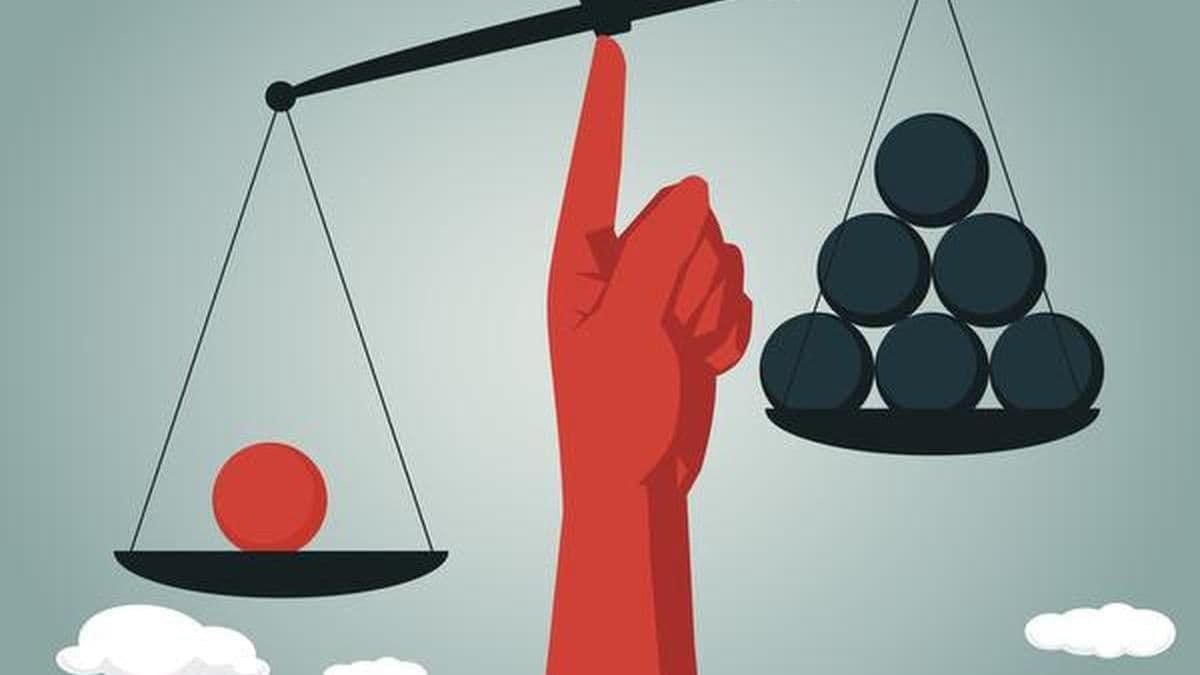 Why in News?
Why in News?
A recent World Bank report has sparked discussions by asserting that inequality in India is low and declining, based on consumption data. In contrast, various independent studies and expert analyses dispute this view, indicating significantly high and increasing levels of income and wealth inequality. This discrepancy raises questions about the reliability of the data, the methodology employed, and the implications for policy.
Key Takeaways
- The Gini coefficient is reported to have decreased from 0.288 (2011-12) to 0.255 (2022-23), suggesting one of the lowest levels of inequality globally.
- Critics argue that this reflects consumption inequality rather than true income or wealth inequality.
Additional Details
- Gini Coefficient: A statistical measure representing income or wealth inequality within a group or country, ranging from 0 (perfect equality) to 1 (perfect inequality).
- Consumption inequality is defined as the disparity in spending habits rather than income or wealth distribution.
- Data collection issues stem from Household Consumption Expenditure Surveys (HCES) for 2011-12 and 2022-23, which may not accurately capture high-end consumption and are methodologically inconsistent.
- According to the World Inequality Database (WID), the income Gini coefficient for 2022-23 stands at 0.61, while the wealth Gini is at 0.75, indicating high levels of inequality.
- The top 1% of individuals possess approximately 40% of personal wealth in India, with only a few countries having a higher concentration.
In conclusion, while the World Bank's consumption-based data might suggest a positive trend, it conceals the deeper issues of income and wealth inequality that increasingly characterize India's economic landscape. For effective policymaking, it is crucial to grasp the actual state of inequality to develop inclusive and sustainable growth strategies.
GS3/Economy
International Financial Services Centres Authority (IFSCA)
Source: PIB
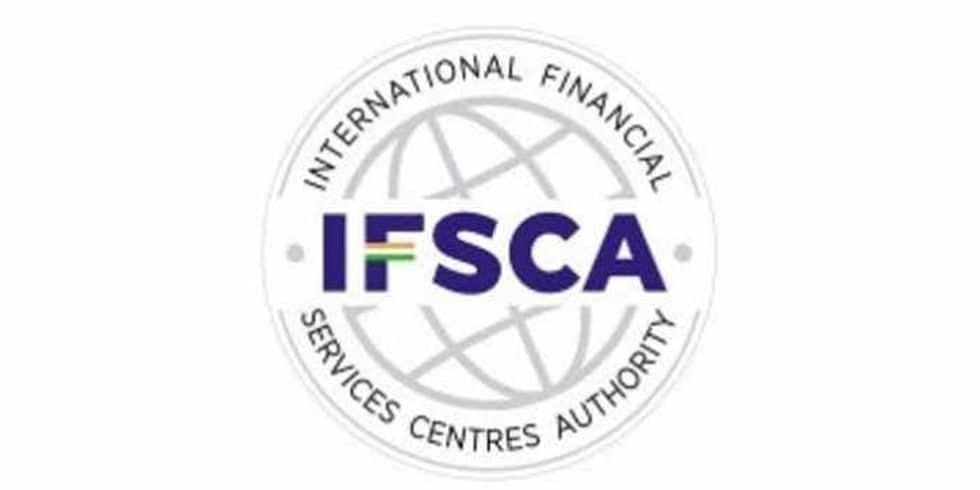 Why in News?
Why in News?
The largest privately owned bank in Taiwan, CTBC Bank, has recently applied to the International Financial Services Centres Authority (IFSCA) to establish an IFSC Banking Unit (IBU) in GIFT City, marking a significant development in the international financial landscape.
Key Takeaways
- The IFSCA is a statutory authority established under the International Financial Services Centres Authority Act, 2019.
- It serves as a unified regulatory body for financial products, services, and institutions within India's International Financial Services Centre (IFSC).
- GIFT City in Gandhinagar, Gujarat, is the location of India's first IFSC.
Additional Details
- IFSCA: This authority aims to enhance global connectivity while addressing the needs of the Indian economy, functioning as an international financial platform for the region.
- Regulatory Framework: Before the IFSCA was formed, regulatory oversight in the IFSC was the responsibility of domestic authorities such as the RBI, SEBI, PFRDA, and IRDAI.
- Composition: The IFSCA comprises nine members appointed by the central government, including a chairperson, representatives from the RBI and SEBI, and two members from the Ministry of Finance.
- Term Duration: Members of the IFSCA serve for a term of three years, which can be renewed upon reappointment.
The establishment of the IBU by CTBC Bank not only highlights the growing role of GIFT City as a financial hub but also emphasizes the strategic importance of the IFSCA in shaping India’s position in the global financial arena.
GS3/Environment
Bhadrakali Lake
Source: Deccan Chronicle
Why in News?
Activists are urging the Telangana government to reconsider plans for island development in Bhadrakali Lake due to growing concerns about the lake's shrinkage.
Key Takeaways
- Bhadrakali Lake is an artificial lake located in Warangal, Telangana.
- The lake spans approximately 32 acres and extends over a distance of 2 kilometers.
- Constructed during the 12th century by Ganapati Deva of the Kakatiya dynasty, the lake was originally intended to serve as a source of drinking water.
Additional Details
- Connection to Maneru Dam: Bhadrakali Lake is linked to the Maneru Dam through the Kakatiya Canal.
- Bhadrakali Temple: A significant feature of the lake is the Bhadrakali Temple, situated on one of its islands. This ancient temple, originally built during the Chalukyan reign in 625 AD, is dedicated to Goddess Bhadrakali, an incarnation of Durga.
The ongoing discussions regarding the future of Bhadrakali Lake highlight the need for sustainable development that respects the ecological significance of such historical sites.
GS3/Science and Technology
Air India Crash: Why Fuel Control Switches Matter
Source: TOI
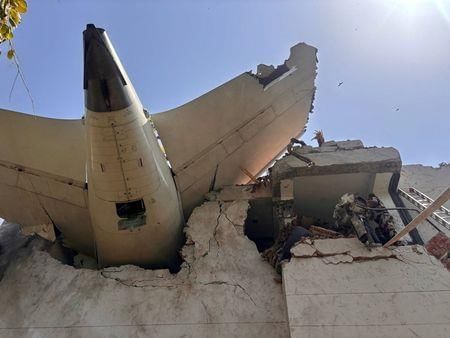 Why in News?
Why in News?
The recent preliminary report from the Aircraft Accident Investigation Bureau (AAIB) concerning the Air India crash on June 12 has highlighted a critical issue: both engine fuel control switches transitioned from 'RUN' to 'CUTOFF' shortly after takeoff, which may have led to the accident. Cockpit recordings have revealed one pilot querying another about the potential fuel cut-off, which was denied. Despite both pilots having ample flying experience, investigators are currently analyzing flight and voice recorder data to discern the reasons behind the switch activation.
Key Takeaways
- The crash involved fuel control switches that are vital for engine operation.
- Investigations are ongoing to determine if human error, mechanical failure, or system malfunction led to the incident.
Additional Details
- Fuel Control Switches: These switches regulate the fuel flow to the engine and require intentional manual action to toggle between 'RUN' and 'CUTOFF'.
- On Boeing 787s, the switches are located below the thrust levers and are designed to prevent accidental activation through physical brackets and a stop-lock mechanism.
- In-flight usage is limited to emergencies, such as engine failure or severe damage. Under normal circumstances, accidental activation is deemed nearly impossible.
- In the case of Air India flight AI 171, both switches were moved to 'CUTOFF' immediately after takeoff, cutting off fuel from both engines.
- Experts contend that pilots typically only operate one switch at a time during mid-flight emergencies, as modern aircraft can fly on one engine alone.
- The fuel control switches in question are manufactured by Honeywell and have been previously flagged by the FAA for potential locking mechanism issues, which Air India did not address.
The preliminary findings raise significant concerns regarding cockpit procedures, safety checks, and possible technical faults. The investigation continues to explore the implications of the cockpit recordings, which suggest that neither pilot intentionally moved the switches during the climb.
GS3/Science and Technology
Key Facts about Plague
Source: BBC
Why in News?
A recent case in northern Arizona, United States, reported the first death from pneumonic plague in the region in 18 years, highlighting the ongoing risks associated with this infectious disease.
Key Takeaways
- Plague is caused by the bacterium Yersinia pestis.
- It primarily spreads through flea bites from infected animals.
- The disease has historical significance, notably during the Middle Ages in Europe.
- There are three main types of plague: bubonic, septicemic, and pneumonic.
Additional Details
- Pneumonic plague: This form of plague affects the lungs and is the most severe type, often resulting from untreated cases of other plague forms.
- Plague can be very severe, with a case-fatality ratio of 30% to 60% for bubonic plague and nearly always fatal for pneumonic plague if not treated.
- It can be effectively treated with antibiotics, but prompt medical intervention is crucial to prevent serious health complications or death.
This incident serves as a reminder of the persistent threat of plague, particularly in rural areas of the western United States and certain regions of Africa and Asia.
GS2/International Relations
Trump Taking Aim at BRICS
Source: The Hindu
Why in News?
President Trump has recently threatened to impose a 10% tariff on nations participating in the BRICS alliance after their 2025 Rio summit. This action is part of his ongoing pattern of trade-related warnings and reflects his perception of BRICS as a significant threat to U.S. economic interests.
Key Takeaways
- Trump considers BRICS a challenge to U.S. dominance due to its push for a common currency and alternatives to the U.S. dollar.
- The BRICS summit in Rio prompted Trump to threaten additional tariffs specifically targeting member nations.
- BRICS members denied that their initiatives are aimed at replacing the U.S. dollar.
- India has distanced itself from the notion that BRICS is anti-American.
Additional Details
- Trump's Tariff Threats: Trump has warned of a 10% tariff on countries aligning with BRICS, viewing it as a direct penalty for membership. His earlier threats included up to 100% tariffs, though the implementation timeline remains uncertain.
- De-dollarisation: This term refers to the effort to reduce reliance on the U.S. dollar in global finance. BRICS leaders assert that their use of national currencies is not intended to replace the dollar, especially in light of recent geopolitical tensions.
- Emerging economies are advocating for a diversified financial system to mitigate vulnerabilities caused by over-dependence on the dollar.
- During the 2025 Rio summit, BRICS leaders condemned unilateral trade tariffs, indirectly criticizing U.S. trade policies.
In conclusion, while President Trump perceives BRICS as a threat to U.S. economic interests, BRICS members have collectively maintained that their initiatives do not aim to undermine the U.S. dollar. The dynamics within BRICS showcase a mix of cooperation and differing perspectives among its members, particularly concerning relations with the U.S.
GS3/Environment
Key Facts about Blackbuck
Source: Tribune India
Why in News?
Wildlife officials have reported a significant decline in the population of blackbucks in the Abohar Wildlife Sanctuary, Punjab, raising concerns about their conservation status.
Key Takeaways
- The blackbuck is an antelope species native to India and Nepal.
- It has been declared the state animal by Punjab, Haryana, and Andhra Pradesh.
- Its habitat includes open grasslands, dry scrub areas, and thinly forested regions.
Additional Details
- Scientific Name: Antilope cervicapra
- Physical Features:
- Dark brown or black sleek fur with white markings on the chest, belly, muzzle, and chin of males.
- Males possess ringed horns that can grow up to 28 inches in length and weigh between 70 to 95 pounds, reaching a height of 32 inches.
- Females are smaller, have non-ringed horns, and exhibit excellent eyesight and speed, which help them evade predators.
- Conservation Status:
- IUCN Red List: Least Concern
- Wildlife Protection Act of 1972: Schedule I
- CITES: Appendix III
The blackbuck's population decline is alarming, and efforts must be made to protect this species and its habitat to ensure its survival.
GS3/Environment
Pong Dam Lake Wildlife Sanctuary
Source: Indian Express
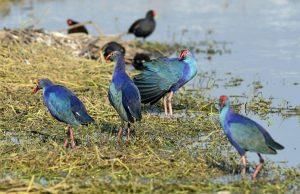 Why in News?
Why in News?
Recent reports highlight that hundreds of buffaloes are seen grazing freely within the restricted areas of the Pong Wildlife Sanctuary, particularly in Samkehar, Bathu, and Panalath, which raises concerns about violations of sanctuary regulations.
Key Takeaways
- Pong Dam Lake, also known as Maharana Pratap Sagar, is a manmade reservoir formed by the construction of Pong Dam on the Beas River.
- It is located in the wetland zone of the Shivalik hills in the Kangra district of Himachal Pradesh.
- The sanctuary covers approximately 245 sq.km and includes the water body of the reservoir along with surrounding wetland environments.
- Designated as a Ramsar site in 2002, it is recognized for its ecological significance.
Additional Details
- Flora: The sanctuary features a diverse range of vegetation, including submerged plants, grasslands, and forests. Notable species include eucalyptus, acacia, and shisham.
- Fauna: The sanctuary is situated on the trans-Himalayan flyway, attracting over 220 bird species, including 54 species of waterfowl. Notable birds include Bar-headed geese, Pintails, and Cormorants.
- In addition to birds, the area is home to various mammals such as Sambar, Barking Deer, Wild Bear, Nilgai, Clawless Otter, and Leopards.
The Pong Dam Lake Wildlife Sanctuary plays a crucial role in conserving biodiversity and providing a habitat for numerous species, making it essential to enforce regulations that protect its ecosystem.
GS3/Environment
Revisiting Eco-Sensitive Zone (ESZ) Guidelines - Towards Ecological and Socio-Economic Balance
Source: NDTV
Why in News?
The recent meeting of the Standing Committee of the National Board for Wildlife (SC-NBWL), chaired by the Union Environment Minister, decided to revisit the 2011 guidelines on Eco-Sensitive Zones (ESZs). This initiative arises from concerns regarding the necessity for more region-specific, flexible, and balanced ecological governance surrounding India’s protected areas.
Key Takeaways
- Revision of ESZ Guidelines to enhance ecological and socio-economic balance.
- Need for a site-specific ESZ framework to address diverse regional needs.
- State-wise inputs highlighting local concerns and compliance monitoring gaps.
- Emerging ecological challenges, particularly from large renewable energy projects.
Additional Details
- Eco-Sensitive Zones (ESZs): Also referred to as Ecologically Fragile Areas (EFAs), these areas are designated by the Union Ministry of Environment, Forest and Climate Change (MoEFCC) around Protected Areas, National Parks, and Wildlife Sanctuaries. The primary purpose is to create "shock absorbers" that regulate and manage activities near these regions.
- Statutory Backing: While the Environment (Protection) Act 1986 does not explicitly mention Eco-Sensitive Zones, it is utilized by the Government of India to declare these zones effectively.
- 2011 Guidelines: Issued by MoEF&CC, these guidelines provide a framework for declaring ESZs, with the potential extent reaching up to 10 km around a protected area.
- SC-NBWL Directive: The Union Environment Ministry is tasked with drafting a revised note on ESZs, conducting international consultations, and facilitating multi-stakeholder dialogues.
- Need for Site-Specific ESZ Framework: The current blanket 10-km norm is considered ineffective, as it does not account for the ecological and developmental disparities across regions.
In summary, the revision of the ESZ guidelines aims to align ecological governance with local socio-economic conditions, thereby enhancing the protection of biodiversity while considering development needs. The initiative highlights the importance of stakeholder engagement and tailored approaches to conservation.
|
38 videos|5258 docs|1111 tests
|
FAQs on UPSC Daily Current Affairs: 13th July 2025 - Current Affairs & Hindu Analysis: Daily, Weekly & Monthly
| 1. What is the BRICS grouping and what are its main objectives? |  |
| 2. What security measures are typically implemented for the Amarnath Yatra? |  |
| 3. What are the key factors contributing to inequality in India? |  |
| 4. What role does the International Financial Services Centres Authority (IFSCA) play in India's economy? |  |
| 5. What are the ecological significance and main attractions of Bhadrakali Lake? |  |
















